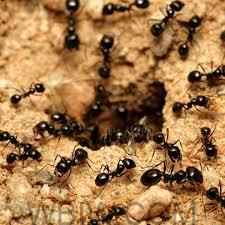
INDIANA- Following the recent heatwave, meteorologists across the board are warning of extreme weather in the summer of 2024 across most of the continental USA. While natural events such as heatwaves, storms, floods, and tornadoes are some of the more devastating impacts of extreme weather, an often-overlooked consequence is the increase in bug activity. Although bugs generally don’t cause the same devastating impacts as extreme weather events, they can become a severe annoyance, and getting rid of them can become quite costly for homeowners.
The Pest Dude recently analyzed predicted summer 2024 temperatures and rainfall data from Climate.gov for each U.S. state to determine which pests are more likely to be a problem there.
Indiana is predicted to have a warmer summer than average with equal rainfall. This combination is likely to increase the activity of the following pests in the state: cockroaches, ants, spiders, houseflies, bed bugs, centipedes, crickets, and silverfish.
Zachary Smith of The Pest Dude breaks down why each of these bugs is likely to be more frequent in Indiana in the summer of 2024, and how they can best be treated:
Ants:
- Why More Frequent: Warm weather increases ant foraging activity, and rain can drive them indoors to seek shelter
- Treatment:
- Ant Baits and Traps: To attract and kill ants, place ant baits near entry points and along ant trails. Use bait stations that allow ants to carry the poison back to the colony.
- Seal Entry Points: Inspect and seal cracks and gaps around windows, doors, and foundations to prevent ants from entering the home.
- Maintain Clean Surfaces: Keep kitchen counters, floors, and food storage areas clean and free of crumbs, spills, and food residues that attract ants.
Cockroaches:
- Why More Frequent: Warm temperatures and high humidity drive cockroaches indoors, seeking food and shelter.
- Treatment:
- Cockroach Baits and Traps: Place baits and traps in areas where cockroaches are likely to travel, such as kitchens, bathrooms, and basements.
- Seal Entry Points: Inspect and seal cracks, gaps, and openings around doors, windows, and pipes to prevent cockroaches from entering the home.
- Clean and Dry Environment: Maintain a clean environment by regularly cleaning kitchen surfaces, disposing of garbage, and addressing any moisture issues.
Centipedes:
- Why More Frequent: Moist, warm environments encourage centipede activity.
- Treatment:
- Reduce Moisture: Use dehumidifiers and fix leaks to lower humidity levels.
- Remove Clutter: Eliminate clutter and debris that provide hiding places.
- Seal Entry Points: Seal gaps and cracks around the home to prevent entry.
Spiders:
- Why More Frequent: Warm temperatures increase spider activity and reproduction.
- Treatment:
- Reduce Clutter: Remove clutter and debris where spiders can hide.
- Seal Entry Points: Seal gaps and cracks around the home to prevent spiders from entering.
- Spider Traps: Use sticky traps to capture and monitor spider activity.
Houseflies:
- Why More Frequent: Warm weather speeds up the breeding cycle of houseflies.
- Treatment:
- Fly Traps: Use sticky traps or UV light traps to capture flies.
- Maintain Cleanliness: Regularly clean surfaces, dispose of garbage, and avoid leaving food out.
- Proper Food Storage: Store food in sealed containers to prevent attracting flies.
Bed Bugs:
- Why More Frequent: Increased travel and warmer weather contribute to bed bug infestations.
- Treatment:
- Regular Inspections: Inspect mattresses, bed frames, and furniture for signs of bed bugs.
- Heat Treatments: Heat treatments or steam cleaning kill bed bugs and their eggs.
- Professional Extermination: Hire a pest control professional for thorough bed bug treatments.
Crickets:
- Why More Frequent: Warm weather increases cricket activity and breeding.
- Treatment:
- Reduce Moisture: Fix leaks and reduce humidity levels to make environments less attractive to crickets.
- Seal Entry Points: Seal gaps and cracks to prevent crickets from entering the home.
- Cricket Baits: Use baits and traps to capture and reduce cricket populations.
Silverfish:
- Why More Frequent: Humid, warm conditions promote silverfish activity.
- Treatment:
- Reduce Humidity: Use dehumidifiers and fix leaks to lower moisture levels.
- Seal Entry Points: Seal gaps and cracks around the home to prevent silverfish from entering.
- Silverfish Traps: Use sticky traps or baited traps to capture and monitor silverfish activity.
Infographic showing the potential increase in pest activity in summer 2024



